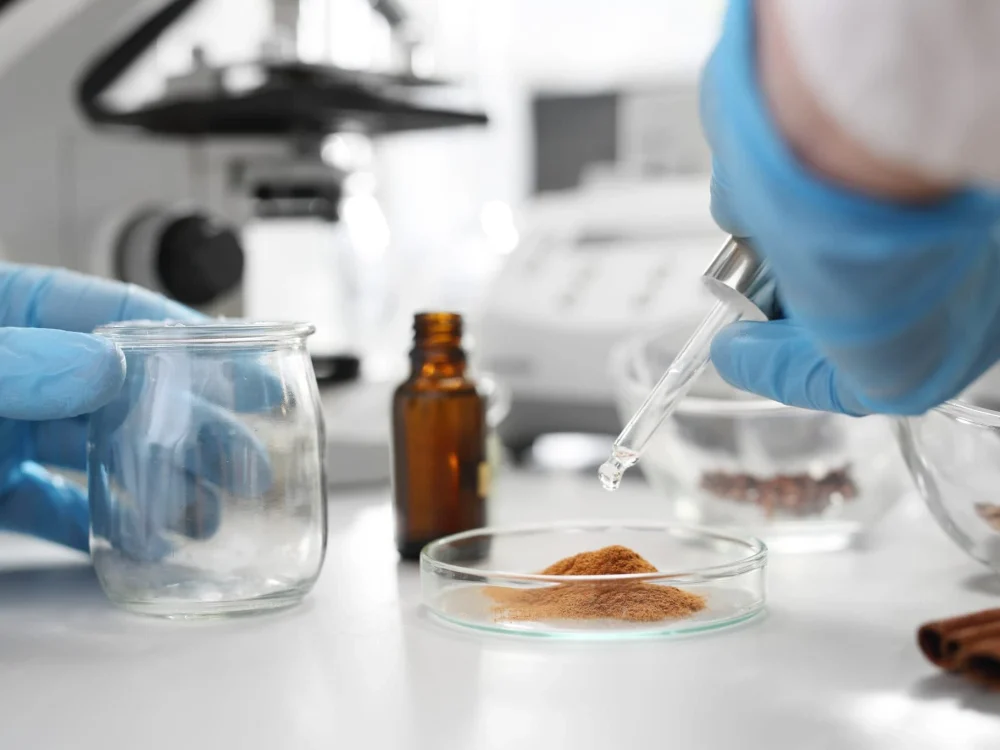The creation of a successful cosmetic product is a sophisticated blend of art, chemistry, and regulatory compliance. It moves far beyond simply mixing ingredients; it involves meticulous research, precision manufacturing, and rigorous testing. For brands looking to create effective, market-ready products, understanding the three core pillars—Process, Ingredients, and Testing—is crucial for successful Cosmetic OEM Product Development and Custom Formulation.

The Manufacturing Process and Technology
Cosmetic formulation development begins with a concept and evolves through structured stages to ensure the final product is stable, safe, and scalable.
Process Categories and Details
The manufacturing of cosmetics falls into a few key process types, primarily distinguished by the physical state of the final product:
- Emulsification (Creams, Lotions, Serums): This is the core of most skincare and some makeup products. It involves blending oil-based ingredients (lipids) and water-based ingredients into a stable mixture.
- Detail: This process requires specialized equipment like homogenizers and vacuum emulsifiers to create extremely fine and stable droplets (the emulsion). Precise temperature and mixing speeds are critical for avoiding separation (instability).
- Mixing and Dispersion (Gels, Cleansers, Powders): This process focuses on uniformly distributing solids into a liquid base or blending dry powders.
- Detail: For gels or cleansers, various thickeners and surfactants are simply mixed until the desired viscosity is achieved. For powders (e.g., eyeshadows, setting powders), the process is dispersion, where pigments are milled and blended with fillers to achieve uniform color and texture.
- Compounding (Balms, Lipsticks, Waxes): This involves heating solid components like waxes and butters to a liquid state, mixing in oils and colors, and then carefully cooling the mixture into a solid form.
- Detail: Temperature control is paramount. The cooling rate affects the product’s crystal structure, directly influencing its final texture, shine, and stability.
All manufacturing is governed by strict Good Manufacturing Practice (GMP) standards to ensure consistency and prevent contamination during Cosmetic Manufacturing.
Essential Raw Materials and Functions
A successful formula balances a few core ingredient groups, each playing a critical role in the product’s function, stability, and sensory profile.
| Ingredient Category | Function and Role | Key Examples & Benefits |
| Active Ingredients | Deliver the claimed benefits of the product (e.g., anti-aging, hydration, brightening). | Niacinamide (Vitamin B3) for barrier support and brightening; Vitamin C (Ascorbic Acid) for potent antioxidant and collagen boosting; Hyaluronic Acid for deep hydration and plumping.Glabridin |
| Excipients/Base Materials | Provide the bulk, texture, feel, and structure of the product. | Emollients (e.g., Shea Butter, Plant Oils) to soften the skin; Humectants (e.g., Glycerin) to attract and retain moisture. |
| Emulsifiers & Surfactants | Keep oil and water phases blended (emulsifiers); clean the skin and create foam (surfactants). | Cetearyl Alcohol (a fatty alcohol emulsifier); various Glucosides (milder surfactants often used in organic skincare). |
| Stabilizers & Preservatives | Protect the formula from microbial contamination, oxidation, and physical separation over time. | Phenoxyethanol (broad-spectrum preservative); Tocopherol (Vitamin E, a powerful antioxidant that prevents oil rancidity). |
The selection of ingredients—from certified organic makeup components to advanced cosmeceuticals—is the foundation of Crafting Your Unique Formula.
Testing Standards and Methods
| Testing Category | Purpose and Method | Compliance and Standards |
| Stability Testing | Determines the product’s shelf life and stability under various storage conditions. | Method: The product is subjected to accelerated aging (high temperatures, freeze-thaw cycles) to check for changes in pH, viscosity, color, and odor. Essential for all Product Development. |
| Microbiological Testing | Ensures the product is free from harmful bacteria, yeast, and mold, and that the preservative system is effective. | Method: Preservative Efficacy Testing (PET), or Challenge Testing, involves intentionally introducing microorganisms to the formula to test the preservative system’s ability to kill or prevent their growth (e.g., ISO 11930 protocols). |
| Compatibility Testing | Assesses how the finished product interacts with its final packaging (bottles, jars, pumps) over time. | Method: Product is stored in the final packaging at high temperatures. Check for discoloration, leakage, softening of plastic, or degradation of the product due to leaching chemicals. |
| Safety Testing | Confirms the product is safe for human use and minimizes the risk of irritation or sensitization. | Method: Patch Testing (often conducted on human volunteers under supervision) to check for allergic reactions or irritation. Mandatory for regulatory filing. |
| Efficacy Testing | Provides scientific data to support all product claims (e.g., “reduces wrinkles,” “provides 24-hour hydration”). | Method: Specialized in-vitro (lab) or in-vivo (human clinical trials) testing using tools like corneometers (for hydration) or expert grading scales. This supports Custom Formulation claims. |
By mastering these three stages—from the initial compounding technology to the final compliance checks—brands ensure they are delivering high-quality, innovative, and market-ready cosmetic solutions. Are you ready to move your Cosmetics OEM concept from the lab to the consumer?